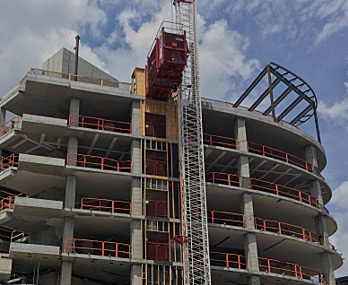The cost of borrowing money or the incentive for saving it is determined by the interest rate. It’s measured as a percentage of the loaned or saved number. When you have a home mortgage, you borrow money from banks. Other loans can be used to finance the purchase of a vehicle, an appliance, or a school.
Banks borrow money from you in the form of loans, and they pay you interest by using the money you deposit. They finance loans with money from deposits.
The federal funds rate is the rate at which banks lend one another their reserve deposits. However, it may have an effect on other interest rates, such as consumer loans and the cost of funding commercial real estate, affecting land prices.
Commercial loan interest rates are typically higher than home loan interest rates. Fees such as valuation, regulatory, loan filing, loan origination, and/or survey fees are common in commercial real estate transactions, and they contribute to the total expense of the loan.
Here we will analyze the ability of interest rates to significantly influence decisions bordering around the purchase or sale of real estate properties.
Interest Rates and Property Values: Exploring the Connection
One tool used by developers to calculate land prices is the income technique. The Net Operating Income (NOI) of a property is calculated by subtracting regular operating expenses from real or forecasted property income.
After determining the NOI, developers deduct the cost of borrowing from the NOI to estimate the property’s Net Cash Flow (NCF). NCF should also be thought of as the funds left to owners at the end of the day after management and interest costs have been deducted. In several ways, NCF is close to dividend distributions from securities.

How Do Interest Rates Affect the Financial Performance of Commercial Real Estate?
The use of positive equity is one of the advantages of investing in commercial real estate.
Consider the case of purchasing a property with a 6% limit rate and a 3.5 percent borrowing fee. A yield of 2.5 percent is produced by the difference between these two metrics (also known as the “spread”).
Here’s an example of how to use the income method to calculate the investment’s financial performance:
The cap rate on a property with a market valuation of $1 million and a NOI of $60,000 is 6% ($60,000 NOI / $1 million market value). The corresponding NCF is $25,000, and the yield is 2.5 percent ($25,000 NCF / $1 million market value). ³
Other future advantages of real estate investing that this 2.5 percent yield does not account for include land loss and a likely rise in property market value. Even without these considerations, the 2.5 percent yield, in this case, exceeds the actual 10-year Treasury yield of 1.5 percent.

Interest Rates Can Tip The Scale Significantly
It’s enticing to assume that lower interest rates would lead to higher yields and property prices. Since debt service rates decrease as financing becomes less costly, potential cash flows will improve assuming landlords pay the same amount of rent.
Interest rates, on the other hand, cannot be seen in isolation. Since interest rates are tied to other economic factors, the potentially beneficial impact of declining interest rates can be reduced – or even removed.
Slowing economic growth, the continuing trade war between the US and China, and persistently low inflation were among the reasons the Fed weighed when cutting the wage, according to the New York Times. The New York Times also reports that Fed officials were split on whether or not to lower the interest rate, citing the healthy labor market and low unemployment as arguments to maintain existing interest rates.





